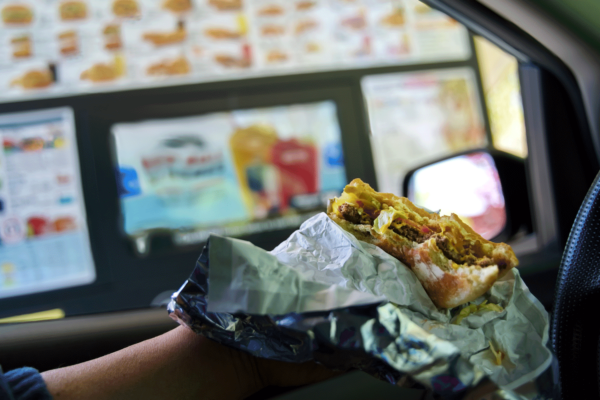The restaurant industry has posted three consecutive years of unit contraction. In April 2020, the number of restaurants in the U.S. fell 0.5% and has failed to increase in each month since.
Contraction was most severe from October 2020 through March 2021, when the rate of decline averaged -2.9%. Restaurant closures slowed through the balance of 2021, moderating to -0.6% in December 2021.
As inflation heated up in 2022, restaurant closures continued, posting moderate losses throughout 2022. Through early 2023, the latest statistics available, units stabilized but still have not posted an increase in any month and saw a 1,600 unit decline in April.
The Segment Divide
Prior to the onset of COVID, full-service restaurant (FSR) growth sputtered through most of 2019, ending the year with approximately the same number of units as the previous year. As COVID hit in the spring, full-service closures accelerated and have continued to contract through 2022 and into 2023.
Initially, both midscale and casual/fine dining restaurants declined at the same rate, but as the impacts of COVID lessened and inflation took hold, the rate of closures moderated for casual/fine dining restaurants while the rate of decline for midscale restaurants continued.
Contraction for limited-service restaurants, meanwhile, lasted for less than a year, as both fast casual and quick-service restaurants resumed expansion in the spring of 2021. Expansion, though, is at a much slower rate of growth versus pre-COVID, where fast casual was growing at 6% clip and QSRs at a 3% rate.
Since 2021, the fast casual segment has been growing at a 2% annual rate while QSRs have averaged less than 1% growth. Still, these are impressive rates of growth, given an environment marred with inflation, labor shortages and supply chain issues.
Keys to Turning Industry Unit Growth Positive
An Increasingly Confident Consumer
The Consumer Confidence Index has been tracking at decade lows for the last two years, bottoming out in 2021 and showing some signs of recovery for the past year. Consumer confidence is being is being thwarted by a number of factors:
- Reduction in spending power
- Disposable Personal Income fell 5% in 2022 and was flat in 2021 – a significant shock to the monthly budget after experiencing 7 consecutive years of growth, topped-off by an extraordinary 7% increase in 2020.
- Credit card debt jumped 13% in 2022, providing a monthly reminder that they need to curtail their spending.
- Navigating historically high inflation – the last time the inflation rate increased 8% was in the early 80’s, when inflation rose 13% in ’80 and 12% in ’81.
- Uncertain economic outlook – fears of a recession and a continuous flow of mixed economic news provides little comfort to consumers managing their monthly budgets and continuing to battle increased prices.
Consumer Finances Trending Up
Disposable personal income began trending positive for consumers this year, one positive sign that consumers may increase spending at restaurants.
Inflation also began to moderate, though, both the overall Consumer Price Index and food CPI were still running at historically high rates, especially when we consider that these increases are on top of significant increases recorded in 2022.
Curbing FSR Closures
Prior to COVID, limited-service restaurants were driving industry unit growth, but full-service restaurants (FSRs) were able to maintain their unit presence. For the last two years, full-service losses have more than offset some of the moderate increases made by LSRs.
While all operators have faced the same pressures, FSRs have been disproportionately affected by COVID and labor challenges. Even inflation has had a more negative impact on FSRs as consumers look for less expensive options from LSRs when their budgets are getting squeezed and menu prices are skyrocketing.
If FSRs cannot minimize their unit closures, it’s unlikely, in this economic environment, that LSRs will aggressively step up their rate of expansion – at least enough to offset FSRs closures.
Altering COVID Routines
In addition to economic headwinds, dining out is also challenged by consumer routines that developed during COVID and continue to persist. COVID’s impact quickly changed consumer routines and now we see that many new behaviors have become routine. For food behaviors, that’s centered on cooking more at home and eating out less.
Outlook
Continued improvement in the economic health of the consumer is critical to getting the restaurant industry back on track. It’s also imperative that as an industry, the expansion is in line with demand. Too many new units in one area dilutes everyone’s business, making it difficult for new and existing units to maintain profitability. When there’s over expansion, new restaurants struggle to develop their business and, in the process, weaken existing restaurants’ traffic counts. Existing restaurants that were struggling to stay open are most negatively affected. In the end, both new and existing restaurants are lost and we’re left with fewer restaurants.
The good news is that the rate of new restaurant openings slowed considerably through the first several months of 2023. For the past 3 years, the number of new restaurant openings only slowed for a few months during the onset of COVID. Otherwise, expansion continued at pre-COVID rates only to be canceled by increases in closures.
With a slower rate of both openings and closures, the industry is in a much healthier position. Now a slight uptick in demand will curtail closures and turn industry unit counts positive.
__________________________________________________________
Dave Jenkins is the Chief Business Officer at Datassential.
If you’d like to know more about the information above or to become a subscriber, reach out here.
For media or press inquiries, email media@datassential.com.






